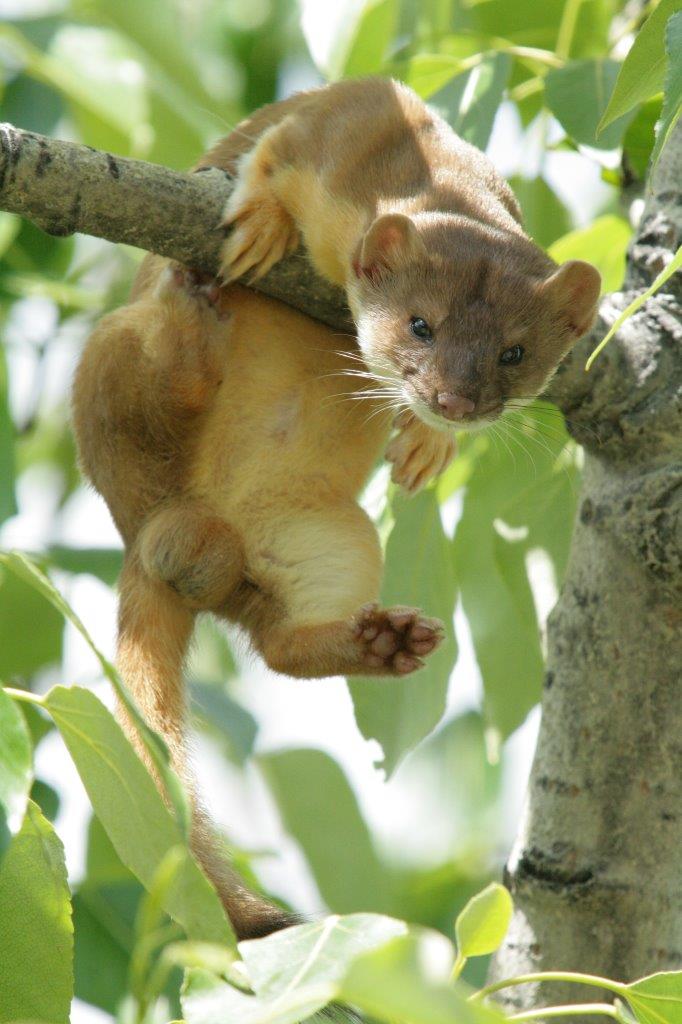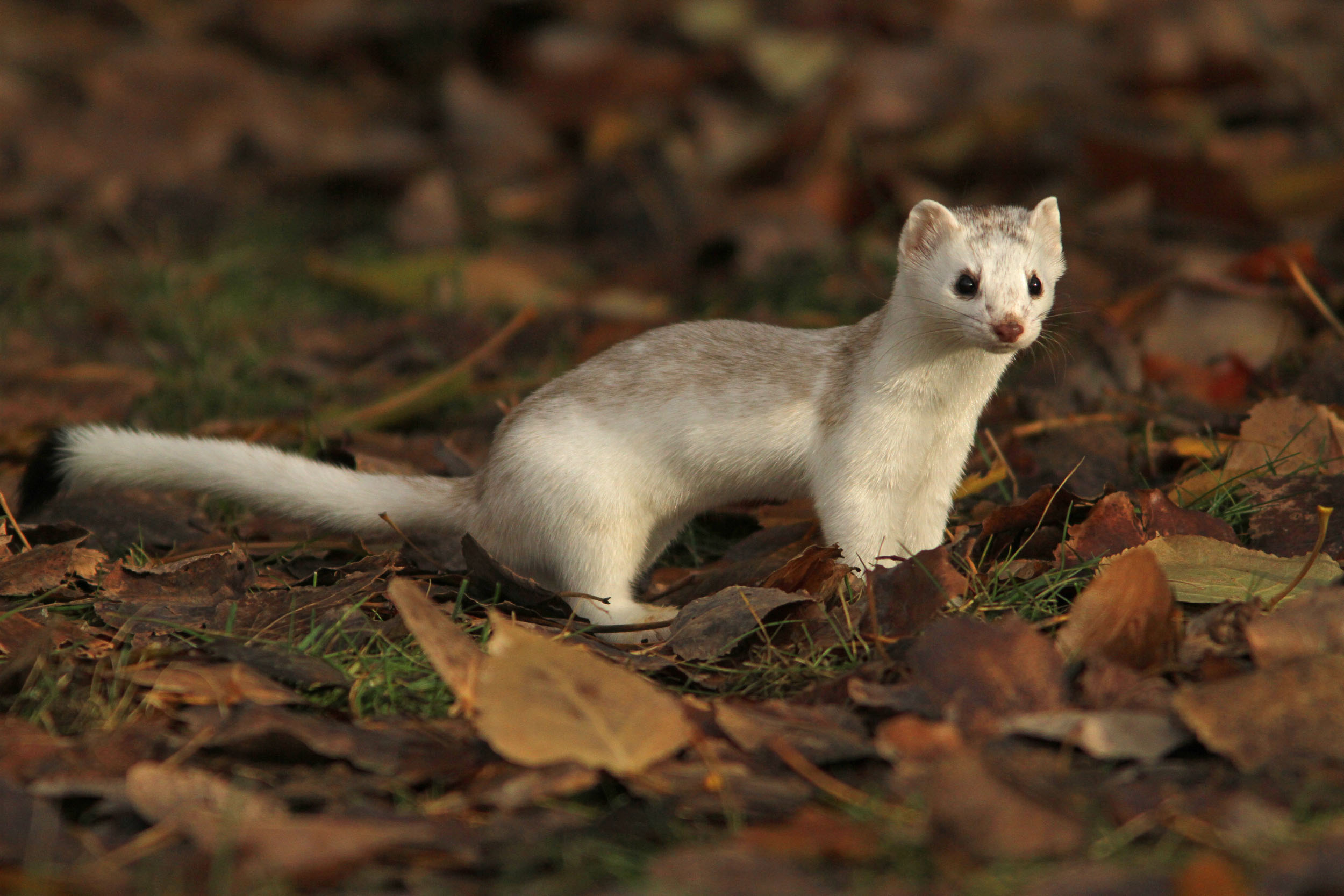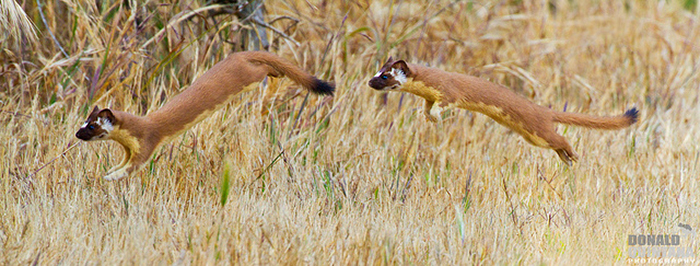Adaptation
Mustela frenata has evolved many adaptions to
best occupy its specific environment. According to mitochondrial
DNA evidence and morphological variation, the long-tailed weasel
most likely diverged as a species in the late Pliocene period
arond 500 million years ago in
the tropical climate of Mexico (Harding and Dragoo 2012). In
addition, scientists have found that Mustela frenata
shares a more recent common ancestor with the tropical Mustela
africana than any other member of the Genus Mustelid.
The early long-tailed weasels then migrated south to Central
America, into the northern regions of South America, and
eventually into North Americ a after the retreat of the glaciers.
This has resulted in the great geographic range of Mustela
frenata (more information about
Habitat and Geography). Over time, the long-tailed weasel
has developed many morphological differences across the species
due to climactic and geographic barriers. As a result, there are
now 42 recognized subspecies of Mustela frenata that
are specifically adapted to their environment (Harding and
Dragoo 2012).
a after the retreat of the glaciers.
This has resulted in the great geographic range of Mustela
frenata (more information about
Habitat and Geography). Over time, the long-tailed weasel
has developed many morphological differences across the species
due to climactic and geographic barriers. As a result, there are
now 42 recognized subspecies of Mustela frenata that
are specifically adapted to their environment (Harding and
Dragoo 2012).
Generally, the long-tailed weasel is thought to have a body shape similar to the rest of the Mustelids (Sheffield and Thomas 1997). Its body is long (300-500 mm), slender and low to the ground due to its relatively short legs (Cold 1998; Sheffield and Thomas 1997). These adaptions allow the long-tailed weasel to fit inside the burrows of rodents and other small mammals as prey (Animal Diversity Web 2002). Learn more about the interactions of the long-tailed weasel here. The short legs of the Mustela frenata allow it to be constantly, quickly and efficiently forage for prey on the ground (Cold 1998) as well as swim and climb (Animal Diversity Web 2002). While foraging for prey Mustela frenata uses its extremely well developed sense of smell and hearing to locate potential food sources (Animal Diversity Web 2002; Sheffield and Thomas 1997). Once it has located its prey, it uses its long, sharp teeth (Cold 1998) to bite though the skull and neck to quickly and efficiently kill their prey by breaking vital blood vessels (Adirondack Ecological Center 1988). In addition, the long-tailed weasel is known to be a fearless and aggressive hunter that will prey on a diverse group of prey. This vicious behavior has certainly contributed to its success as a species (Cold 1998).
The fur of Mustela frenata has several important adaptions
that allow it to avoid predation. This species is known to have several
different colors based on their location and season. Subspecies in the
snowy Northern parts of its range will molt two times per year to have a
white coat in the winter and a brown coat in the summer (Animal
Diversity Web 2002; Sheffield and Thomas 1997). On the other hand,
subspecies located farther south with less snowfall, have brown coats
all year. Some subspecies in rainy areas have developed a darker
coat as well. These adaptions in coat color are just some of the
examples of adaptions that help the long-tailed weasel to be better
camouflaged in its environment (Sheffield and Thomas 1997).
Mustela frenata
 has a dark tip to its tail throughout the year
and all of the subspecies (Cold 1998: Sheffield and Thomas
1997). Scientists believe that its dark tail can confuse avian predators
like hawks and owls that hunt from above (Sheffield and Thomson 1997).
has a dark tip to its tail throughout the year
and all of the subspecies (Cold 1998: Sheffield and Thomas
1997). Scientists believe that its dark tail can confuse avian predators
like hawks and owls that hunt from above (Sheffield and Thomson 1997).
In addition to body coloring, Mustela frenata has developed many other adaptions to avoid predation. The long-tailed weasel is able to release a scent from anal glands with specialized compounds (Wood and Joest 2008). This scent is sickening to many of its predators and other threatening species including humans (Adirondack Ecological Center 1988). Mustela frenata uses these anal secretions to mark its territory (Wood and Joest 2008; Animal Diversity Web 2002). Another predation adaption is its pure aggressive behavior. It has been known to threaten predators considerably larger that itself (Animal Diversity Web 2002; Cold 1998) which is why no predator can consistently support itself by consuming a diet of only Mustela frenata (Adirondack Ecological Center 1988).
Back to Habitat Go to Reproduction
